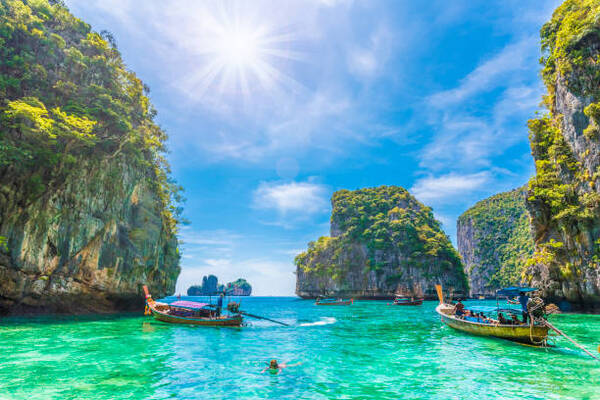Thailand Eyes Sustainable Growth By Prioritizing Big-Spending Tourists Over Budget Travel Surges
3 min readSunday, May 11, 2025

As Thailand rides a renewed wave of tourism resurgence, a critical discussion is unfolding within government agencies, tourism authorities, and expatriate communities. The central question is no longer just about how many tourists the country can attract—but rather, which kinds of tourists it should prioritize in the years ahead. Should Thailand aim for record-breaking visitor numbers as it did in the past, or should it focus on cultivating a more selective, high-value tourism sector, targeting affluent travelers—particularly those from Europe—who seek tranquility, culture, and deeper connections?
This debate has grown louder in the wake of changing global travel trends and the aftermath of the pandemic, which forced countries to reassess the sustainability of mass tourism. Thailand, which long built its tourism brand on affordability and accessibility, is now attempting to reposition itself in the premium segment of the global travel market. In line with this shift, the Tourism Authority of Thailand (TAT) has introduced its strategic vision for the 2024–2025 period, built around the principle of “high-value and sustainable tourism.” The plan is more than just rhetoric. It outlines concrete measures to attract visitors who contribute more economically, stay longer, and place less strain on popular destinations.
Advertisement
Instead of relying on sheer volume, Thai policymakers are now prioritizing visitor quality and spending behavior. Key tourist destinations like Phuket, Pattaya, and Bangkok have historically suffered from overcrowding and overdevelopment. The new approach seeks to reduce the burden on these hotspots by spreading tourism across lesser-known provinces while boosting per-visitor spending. In practice, this means welcoming fewer travelers, but ensuring they spend more per capita—an idea that underscores the country’s transition from a numbers game to a value-focused model.
To support this vision, Thai authorities are investing in various supportive frameworks. This includes improved digital infrastructure, enhanced booking platforms, wellness travel packages, and specialized experiences that cater to niche markets such as medical tourism, spiritual retreats, and eco-adventures. Simultaneously, the government is actively promoting smaller, off-the-beaten-path provinces in the north, northeast, and deep south, aiming to distribute tourism revenue more equitably and reduce environmental pressure on already crowded regions.
Despite the promise of this new direction, not everyone is convinced. Within the expatriate community, particularly in online forums and social media groups, many foreign residents express skepticism. Some argue that policy inconsistencies—especially around visa rules—are undermining the credibility of the “quality tourist” narrative. Recent proposals to discontinue the widely-used sixty-day visa extension have added to this concern, fueling fears among retirees and long-stay travelers that they are no longer welcome or valued in the country.
The need to diversify Thailand’s tourism base has become more urgent due to the disappointing return of Chinese visitors, who were previously the country’s largest source of international arrivals. Since the beginning of 2025, the number of Chinese tourists has remained significantly below projections. Analysts cite a mix of factors behind this dip, including lingering safety worries, slower economic conditions in China, and increased competition from nearby destinations offering streamlined visa access and attractive packages.
To offset this decline, Thailand is broadening its outreach to the European market, seen as more stable and likely to deliver longer stays and higher expenditures. The Thai government is also investing in cross-border transportation infrastructure. Upcoming high-speed rail connections with China and neighboring ASEAN countries are expected to support seamless regional tourism, encouraging multi-destination travel and longer visit durations.
Sustainability is another pillar of Thailand’s revamped tourism model. National strategies now include commitments to reduce carbon emissions, expand eco-tourism offerings, and promote community-based tourism that benefits local economies. By integrating green policies and cultural authenticity into its branding, Thailand aims to set itself apart from budget-driven competitors like Vietnam and Cambodia.
The change is already evident in promotional campaigns. Where once ads focused on shopping, nightlife, and beach parties, new narratives highlight Thailand’s cultural richness, spiritual sanctuaries, wellness escapes, and world-class culinary experiences. While the target of welcoming forty million tourists in 2025 still stands, the emphasis has clearly shifted. Thailand is no longer chasing the tourist masses—it is curating a more refined, rewarding, and sustainable travel experience.
Advertisement



